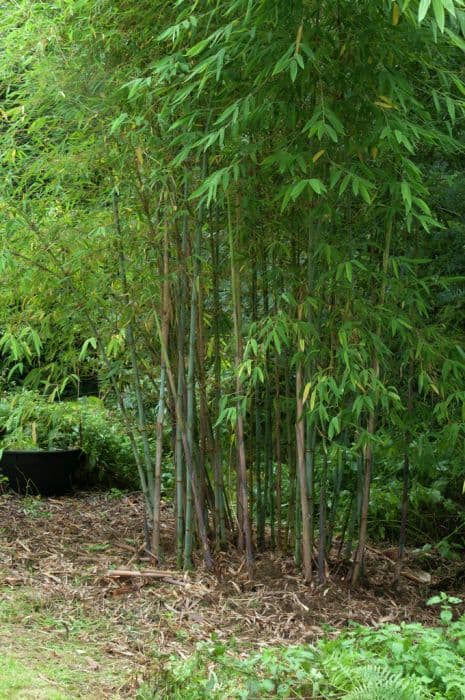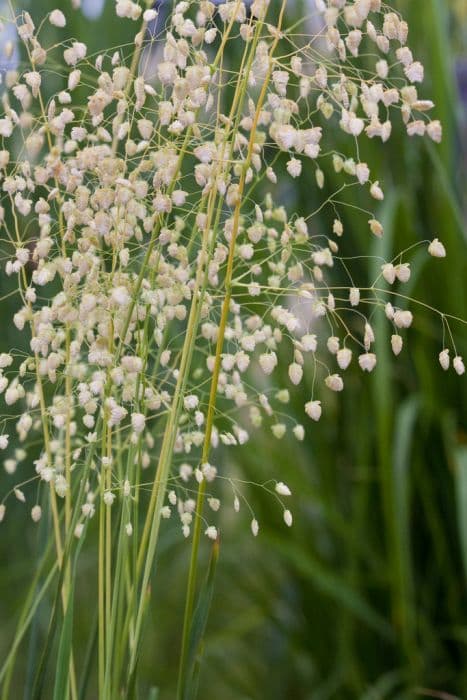Feathertop Pennisetum villosum











ABOUT
P. villosum is a tufted perennial grass, often grown as an annual, with narrowly linear leaves and cylindrical, feathery, whitish-green panicles becoming purple with age
About this plant
 Names
NamesFamily
Poaceae.
Synonyms
Feathertop, Villosum Fountain Grass, White Fountain Grass, Hares Tail Grass.
Common names
Cenchrus villosum, Pennisetum longistylum
 Characteristics
CharacteristicsLife cycle
Perennials
Foliage type
Deciduous
Color of leaves
Green
Flower color
Pink
Height
2-3 feet (0.6-0.9 meters)
Spread
2 feet (0.6 meters)
Plant type
Grass
Hardiness zones
7
Native area
Africa
Benefits
 General Benefits
General Benefits- Ornamental Value: Pennisetum villosum, commonly known as fluffy fountain grass, is often used in landscaping for its attractive fluffy flower plumes and graceful, fountain-like appearance.
- Drought Tolerance: This plant is well-suited to arid and semi-arid environments, making it a water-efficient choice for xeriscaping and dry gardens.
- Erosion Control: The grass's dense root system helps to stabilize soil and prevent erosion, especially on slopes and banks.
- Habitat for Wildlife: Fluffy fountain grass provides shelter and food for birds and small animals, enhancing local biodiversity.
- Low Maintenance: It requires minimal care once established, with little need for fertilization or pest control, making it an easy choice for gardeners.
- Seasonal Interest: The plant adds visual interest across seasons, with showy seed heads persisting into winter and providing textural contrast in the garden.
- Heat Resistance: Pennisetum villosum tolerates high temperatures, which is beneficial in hot climates or urban areas with heat island effects.
 Medical Properties
Medical PropertiesThis plant is not used for medical purposes.
 Air-purifying Qualities
Air-purifying QualitiesThis plant is not specifically known for air purifying qualities.
 Other Uses
Other Uses- Feather fountain grass, as Pennisetum villosum is commonly known, can be used for creating dried floral arrangements due to its feathery and fluffy flower heads that retain their shape and appeal even when dried.
- This plant is often incorporated into wildlife-friendly gardens to attract birds, which find its seeds to be an appealing food source.
- Pennisetum villosum is used in landscape design for erosion control, because its root system helps to stabilize soil on slopes and banks.
- The plant can serve as a cover crop in agricultural practices, protecting the soil between the main crop cycles and providing organic matter when tilled back into the soil.
- Feather fountain grass is implemented in xeriscaping, which is a landscaping method that reduces or eliminates the need for irrigation, making it suitable for drought-prone areas.
- The plant's dense growth can act as a natural privacy screen in gardens, growing quickly to provide a visual barrier.
- In areas where it is non-invasive, it can be used to fill up large, empty garden spaces relatively quickly, making for a cost-effective gardening solution.
- The plant's tall and graceful form is used as a windbreak in gardens, helping to protect smaller, more delicate plants from strong winds.
- Pennisetum villosum is a choice plant for gardeners looking to create naturalistic or prairie-style gardens due to its wild, untamed appearance.
- The plant serves as an acoustic barrier when planted densely, as its foliage and feathery plumes can help dampen ambient noise.
Interesting Facts
 Feng Shui
Feng ShuiThe Feather grass is not used in Feng Shui practice.
 Zodiac Sign Compitability
Zodiac Sign CompitabilityThe Feather grass is not used in astrology practice.
 Plant Symbolism
Plant Symbolism- Resilience: Pennisetum villosum, commonly known as Feather Pennisetum or Fountain Grass, often signifies resilience as it’s a robust plant that can withstand various climates and conditions.
- Growth and Expansion: The way Fountain Grass grows in clumps and spreads gives it the symbolic meaning of growth and expansion, which may reflect personal growth or expansion of ideas.
- Elegance and Grace: With its feathery inflorescences, this grass symbolizes elegance and grace, making it a popular choice in ornamental gardening to add a touch of finesse.
- Freedom: The free-flowing nature of the grass as it sways in the wind can signify a sense of freedom and the unrestrained aspects of life.
- Prosperity: In some cultures, grasses like Fountain Grass can represent prosperity and fertility due to their abundant seed production and luscious appearance.
 Water
WaterFeather Grass, commonly known as Pennisetum villosum, should be watered deeply but infrequently to encourage a strong root system. During the growing season, watering once a week with approximately 1 to 1.5 gallons per plant is adequate, ensuring that the soil is moist but not waterlogged. In hotter, drier periods, you might need to water twice a week. Reduce watering in the winter to every other week or less, depending on the humidity and rainfall, as the plant is less active during this time. Always check the top inch of soil for dryness before watering to avoid overwatering.
 Light
LightFeather Grass thrives in full sun but can tolerate some partial shade. For optimal growth, place the plant in a spot where it will receive at least six hours of direct sunlight daily. If indoors, south-facing windows are typically the best place for adequate light, but if outdoor, any spot that is not heavily shaded will suffice. Avoid deep shade locations as they can stunt the plant's growth and reduce its flowering.
 Temperature
TemperatureFeather Grass prefers warm temperatures and does well in a range from 60°F to 80°F. It can survive minimum temperatures down to around 20°F but should be protected from prolonged frost. Ideal growing conditions mimic its native African grassland habitat, so warmth is key. Steer clear of locations that are prone to cold drafts or extreme temperature fluctuations.
 Pruning
PruningPrune Feather Grass to remove dead foliage and to maintain its shape. Pruning is best done in late winter or early spring before new growth begins. Cut back the plant to about 3 to 4 inches from the ground to encourage healthy, vigorous growth. Pruning once a year is sufficient, but you can also remove spent flower stalks after blooming if desired for aesthetic purposes.
 Cleaning
CleaningAs needed
 Soil
SoilFeathertop prefers a well-draining soil mix with generous organic matter; a mix of loam, peat, and sharp sand is ideal. Soil pH for feathertop should be slightly acidic to neutral, ranging from 6.0 to 7.0.
 Repotting
RepottingFeathertop should be repotted every one to two years to refresh the soil and accommodate root growth. Repotting is best done in the spring or early summer.
 Humidity & Misting
Humidity & MistingFeathertop thrives in moderate to high humidity levels; aim for 40-50% relative humidity for optimal growth.
 Suitable locations
Suitable locationsIndoor
Place feathertop in bright, indirect light and ensure high humidity.
Outdoor
Place feathertop in full sun to part shade; protect from strong winds.
Hardiness zone
9-11 USDA
 Life cycle
Life cyclePennisetum villosum, commonly known as Feathertop grass, begins its life cycle with seed germination occurring in warm, moist soil conditions typically in spring or early summer. The seedlings emerge and develop into tufted clumps with narrow leaves, reaching maturity within a few weeks under optimal conditions. As the plants grow, they produce distinctive fluffy, feathery panicles that stand above the foliage during summer, which are the inflorescence of the plant and contribute to its ornamental appeal. The flowers then produce seeds, which can be dispersed by wind or through human intervention such as cutting and relocating the seed heads. In colder climates, Feathertop grass behaves as an annual and will die after setting seed; however, in warmer areas, it can persist as a perennial, regrowing from the base after winter dormancy if conditions are favorable. Over time, the clumps may grow large and can be divided in early spring to propagate new plants and maintain vigor.
 Propogation
PropogationPropogation time
Spring to Summer
Pennisetum villosum, more commonly known as the Feathertop grass, is best propagated through division, which can be done in spring. The process involves carefully splitting the dense clumps of the grass into smaller sections, ensuring that each new section has a piece of the root system attached. Once divided, the sections can be replanted immediately into well-draining soil, spaced around one foot (approximately 30 cm) apart to allow sufficient room for growth. It is important to water the new plantings thoroughly after dividing and replanting to help establish the root system. Regular watering should be continued until the plants are well established and showing new growth.









